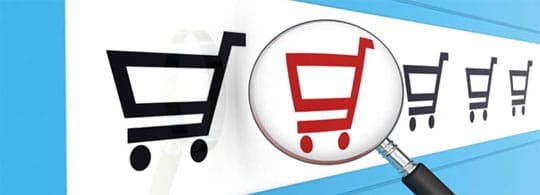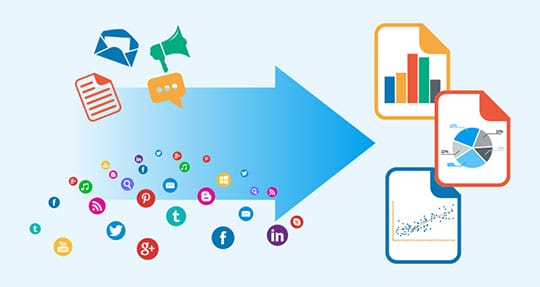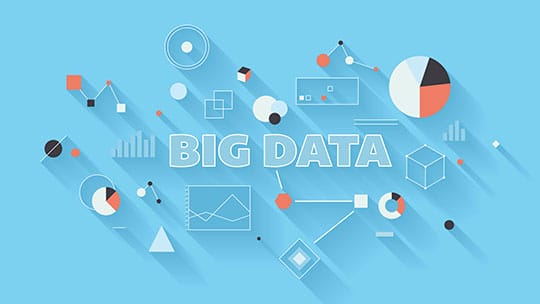Brick-and-mortar stores use big data and analytics tools to maximize transactional value. Through data analysis, brick-and-mortar stores can learn more about their operational needs, financial performance, efficient or inefficient processes, customer behaviors, and more.
Analytics tools use heat mapping, detect facial expressions, and closely monitor transactional data through POS analytics. You can define areas where customers spend the most time and understand their intrinsic reactions to your products.
You’ll use the information to develop stronger marketing and merchandising strategies, make operations on the floor and in the warehouse more efficient, and better manage your supply chain inventory.
Chain stores and those looking to franchise their businesses rely on analytics tools to lay the groundwork and increase efficiencies. 7-Eleven, for example, one of the largest convenience store franchises in the nation, implements the services of SAP to improve business effectiveness and determine the best locations to target their customer base. SAP also assists in corporate decision making and re-engineering their supply chain processes.

As you look to grow your business and increase revenue, adopting an analytics platform is critical. But there are a lot of analytics tools available. The tough part is finding the solution that’s best for your business. Carefully research your options and choose the one that’s best suited for your needs.
1) SAP Digital Consumer Insight
 One of the best tools on the market for understanding customers is the SAP Digital Consumer Insight tool. It offers near real-time mobile data that shows how many consumers pass through a particular location each hour, as well as where they come from, their age and gender, and the devices they are using. This consumer location information can be used to improve your customer targeting, proximity marketing, and location planning strategies.
One of the best tools on the market for understanding customers is the SAP Digital Consumer Insight tool. It offers near real-time mobile data that shows how many consumers pass through a particular location each hour, as well as where they come from, their age and gender, and the devices they are using. This consumer location information can be used to improve your customer targeting, proximity marketing, and location planning strategies.
For those with multiple locations, you can also use the information to compare one store location with another or benchmark the information against your top competitors. All the information is available on a simple dashboard that’s easy to understand and apply.
2) Euclid
 To get a better idea about customer behavioral patterns, Euclid can help you optimize foot traffic, which helps you develop a strategy to increase the number of visitors in your store.
To get a better idea about customer behavioral patterns, Euclid can help you optimize foot traffic, which helps you develop a strategy to increase the number of visitors in your store.
It uses your existing Wi-Fi infrastructure to analyze foot traffic counts and bounce rates in a specific location based on things like store design, marketing effectiveness, and staffing discrepancies.
3) Welllcome
 Welllcome offers highly detailed analytics for physical stores. It treats the location as if it were a website, giving you real-time information on traffic inside the store. It also keeps track of those who leave without making a purchase while trying to give some insight into why they did so.
Welllcome offers highly detailed analytics for physical stores. It treats the location as if it were a website, giving you real-time information on traffic inside the store. It also keeps track of those who leave without making a purchase while trying to give some insight into why they did so.
Welllcome operates through the use of smartphone signals. When installed in your store, Welllcome uses the signals from phones to offer data. This tool is primarily used for showing the total number of people in your store. It doesn’t offer a lot of services outside of that sphere.
4) Lexity
 If you’re looking to get higher in the search results, Lexity can help. It’s a useful apparatus that sends live insights to your mobile phone. It offers a variety of integrated tools as well that can help you strategize your SEO campaign, improve your website for conversions, and watch trends in the industry so you can get a holistic view of your shop.
If you’re looking to get higher in the search results, Lexity can help. It’s a useful apparatus that sends live insights to your mobile phone. It offers a variety of integrated tools as well that can help you strategize your SEO campaign, improve your website for conversions, and watch trends in the industry so you can get a holistic view of your shop.
You can even analyze individual customers to learn more about what compelled the customer to shop at your store. This information will help you shape your marketing and SEO strategies in the future.

5) Google Fusion Tables
 One of many useful Google tools, Fusion Tables tells a story about your customers and their behaviors through data. There are a variety of software services within this app for measuring customer trends and key marketing metrics like advertising effectiveness, analyzing any data that’s been collected, and collaborating and sharing the information across departments.
One of many useful Google tools, Fusion Tables tells a story about your customers and their behaviors through data. There are a variety of software services within this app for measuring customer trends and key marketing metrics like advertising effectiveness, analyzing any data that’s been collected, and collaborating and sharing the information across departments.
The information is compiled into a useful dashboard with graphs to help you understand how to apply the data.
6) Placed
 For actionable insights in offline consumer behavior and competitive trends, Placed can be a useful application. It helps you grow key customer segments and benchmark your business against other store locations and competitors.
For actionable insights in offline consumer behavior and competitive trends, Placed can be a useful application. It helps you grow key customer segments and benchmark your business against other store locations and competitors.
Placed also helps you target your campaign to reach the right audience. It analyzes billions of locations using insights from stores that have opted-in to their services. Participants install a mobile app that continuously measures things like foot traffic patterns and store visits.
The information is most useful for advertising and store locations. It basically shows the most popular businesses for consumers and where your business sits. You can use that data to determine the best placement for advertisements and ideal locations for new storefronts.
7) Minodes
 Minodes is a cloud-based application that keeps an eye on your customers. It uses in-store Wifi, cell phone beacons, and camera technology to judge shopper movements and behaviors. You can explore retail performance, target customers across multiple channels, and measure mobile marketing effectiveness to understand better and retain your shoppers.
Minodes is a cloud-based application that keeps an eye on your customers. It uses in-store Wifi, cell phone beacons, and camera technology to judge shopper movements and behaviors. You can explore retail performance, target customers across multiple channels, and measure mobile marketing effectiveness to understand better and retain your shoppers.
Minodes is useful for creating customer journey maps and revealing floor-to-floor conversions and dwell time. It can also help you tailor a coupon campaign to your client’s interests.
Final Words
Big data plays a chief role in finding and retaining customers, and you would be doing your brick-and-mortar store a disservice by not taking advantage of it. Using tools like these to your advantage defends against the ever-growing competition of eCommerce.

Carefully vet these tools against each other before deciding on the best option. Read reviews and talk to a customer service rep to get a better idea of the tool and how it addresses your expectations. These tools might seem very similar at first, but they range greatly in the data and insights they provide, accuracy, and technology used to source that data. You may find that your customer insights are best served by one or a combination of the tools mentioned above.





